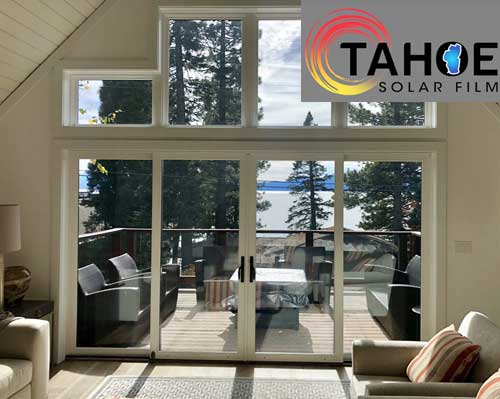When it comes to enhancing comfort, privacy, and energy efficiency in your home, there are a variety of options available. Two popular solutions are home window tinting and curtains. While both can help achieve similar goals—like reducing glare, improving privacy, and controlling temperature—they each come with distinct advantages and disadvantages. If you’re trying to decide which option is best for you, this article will compare the benefits and differences between home window tinting and curtains to help you make an informed decision.
The Basics of Window Tinting vs Curtains
Home Window Tinting involves applying a thin, transparent film to your windows that blocks UV rays, reduces heat, and prevents glare. It is typically a more permanent solution that provides long-term benefits without taking up space.
Curtains, on the other hand, are fabric coverings that hang over windows to block light, provide privacy, and enhance décor. Curtains can be drawn open or closed depending on your needs, giving you flexibility but requiring regular maintenance.
1. Privacy and Glare Reduction
Window Tinting: Window tinting is highly effective at enhancing privacy and reducing glare without sacrificing natural light. The right window film can block up to 99% of harmful UV rays and reduce glare from the sun, making it much easier to watch TV, use a computer, or enjoy a sunny room. Tinted windows prevent outsiders from easily seeing into your home, offering privacy during the day, especially when it’s sunny outside. However, at night, if your lights are on, the privacy may be reduced, as people can see inside.
- Benefit: Provides consistent privacy during the day and reduces glare effectively.
- Consideration: Privacy is less effective at night if lights are on inside.
Curtains: Curtains offer instant privacy when closed, especially if you live in a densely populated area or near a busy street. By drawing the curtains, you can block the view from the outside. However, curtains can also block out light completely, which may not be ideal if you want to enjoy natural light. While they reduce glare, they can also make rooms feel dark and closed off.
- Benefit: Provides complete privacy at any time and blocks light effectively when drawn.
- Consideration: Can block natural light and may not be ideal if you want to let in sunlight.
2. Energy Efficiency
Window Tinting: One of the greatest benefits of window tinting is its impact on energy efficiency. Window films, especially those designed for energy efficiency, can help reduce the amount of heat entering your home in the summer and prevent heat loss in the winter. This can reduce your reliance on air conditioning and heating systems, lowering your energy bills. By reflecting solar heat away from your windows, window tinting keeps your home cooler in the summer. Similarly, during winter, it helps trap the heat inside, maintaining a comfortable temperature.
- Benefit: Reduces cooling and heating costs by blocking heat and UV rays.
- Consideration: More of an investment upfront, but it saves money in the long run.
Curtains: Curtains can provide some level of insulation by reducing heat loss during winter when closed. Heavier fabrics or lined curtains work well to trap warmth inside. In the summer, they can block out the sun’s heat when drawn, preventing your home from overheating. However, curtains are less efficient at regulating temperature compared to window tinting, especially in extremely hot or cold climates. Additionally, curtains don’t block UV rays as effectively as window tinting, so furniture and flooring may still fade over time.
- Benefit: Provides some insulation and helps with temperature regulation.
- Consideration: Not as effective as window tinting in reducing solar heat gain and UV damage.
3. Aesthetic Appeal
Window Tinting: Window tinting has a sleek, modern look that can enhance the exterior appearance of your home. It provides a uniform, clean finish that doesn’t require any maintenance. Tinted windows also retain their appearance over time, unlike curtains, which can fade or become dirty. Window tinting is available in a variety of shades, allowing you to choose the level of darkness that fits your preferences. It’s a subtle way to improve your home’s curb appeal without the bulky presence of curtains or blinds.
- Benefit: Offers a clean, modern, and consistent look without taking up space.
- Consideration: Limited to certain styles and may not fit every type of interior décor.
Curtains: Curtains offer a wide range of styles, colors, and patterns, making them highly customizable. They allow you to add a touch of personality and warmth to a room, whether you choose elegant, classic drapes or casual, modern styles. Curtains also give you the flexibility to change the look of a room easily by swapping out fabric or color, which isn’t possible with window tinting.
- Benefit: Provides variety in design and allows you to enhance the décor of your home.
- Consideration: Requires more maintenance and may become outdated or worn over time.
4. Maintenance and Longevity
Window Tinting: Once installed, window tinting requires little maintenance. There’s no need to worry about cleaning them as often as curtains, and they are durable enough to last for many years. Most window films come with a warranty, ensuring they will continue to perform as expected. Over time, window tinting may need occasional cleaning, but it won’t collect dust or require changing like curtains do.
- Benefit: Low maintenance, long-lasting, and durable.
- Consideration: The initial cost and installation process may be more expensive than curtains.
Curtains: Curtains, while flexible in design, require ongoing care and maintenance. They need to be washed regularly, especially if you live in a dusty area or have pets. Over time, curtains can fade, stretch, or become damaged, requiring replacement. Additionally, curtains can accumulate dust and allergens, which means they’ll need to be cleaned more frequently to maintain their appearance and hygiene.
- Benefit: Can be easily swapped out and cleaned.
- Consideration: Requires regular cleaning and maintenance, and they may need replacement after a few years.
5. Installation Process
Window Tinting: Installing window tinting typically requires professional help to ensure a smooth, bubble-free finish. The process involves applying a thin film to the interior surface of your windows, which may take several hours depending on the number of windows and the size of your home. While it’s a more permanent solution, the professional installation ensures long-lasting results.
- Benefit: Provides long-term results without the need for constant adjustments.
- Consideration: Requires professional installation and is a more permanent commitment.
Curtains: Curtains are relatively easy to install and can be done by the homeowner. All you need are curtain rods, hooks, or rings, and you can hang your curtains in just a few minutes. Unlike window tinting, curtains can be changed at any time, allowing for more flexibility in your home’s style.
- Benefit: Easy to install and replace, and no professional help is needed.
- Consideration: May require regular adjustments and maintenance.
Conclusion
When deciding between window tinting and curtains, it’s important to consider your priorities. If you’re looking for a low-maintenance, energy-efficient solution that reduces glare and improves comfort year-round, window tinting is the way to go. It provides long-lasting results, enhances privacy, and saves on energy costs without sacrificing natural light.
On the other hand, if you want more flexibility in design, a customizable aesthetic, and something that can be easily replaced, curtains might be a better choice. Curtains allow for more room to express personal style and can offer privacy and glare reduction when needed.
Ultimately, both options have their benefits, and the best choice depends on your specific needs and lifestyle. Whether you opt for window tinting, curtains, or even a combination of both, you’ll be able to create a comfortable, stylish, and energy-efficient living space.

